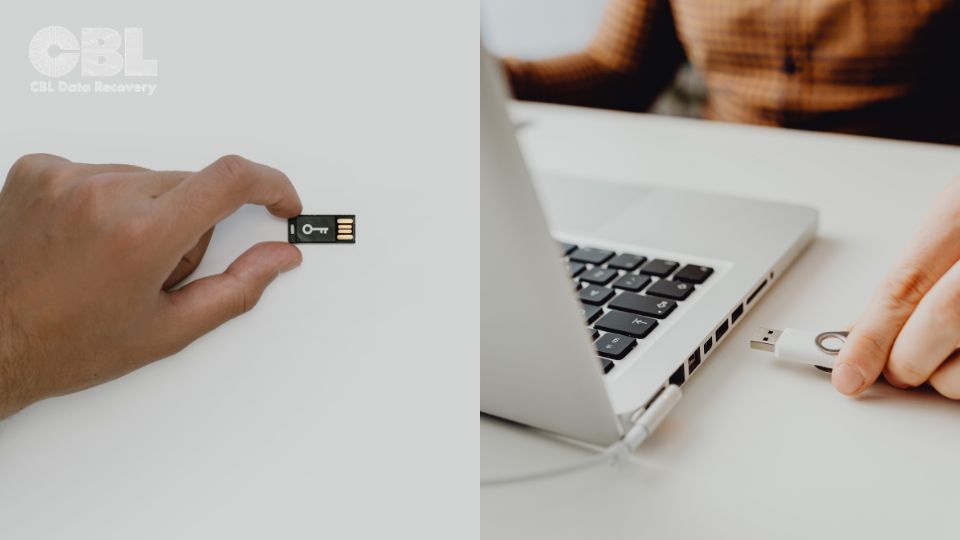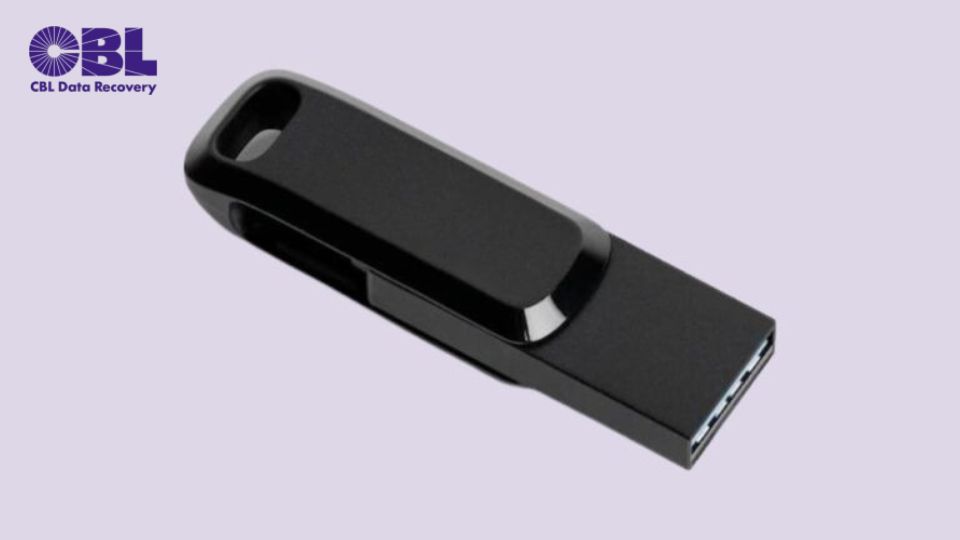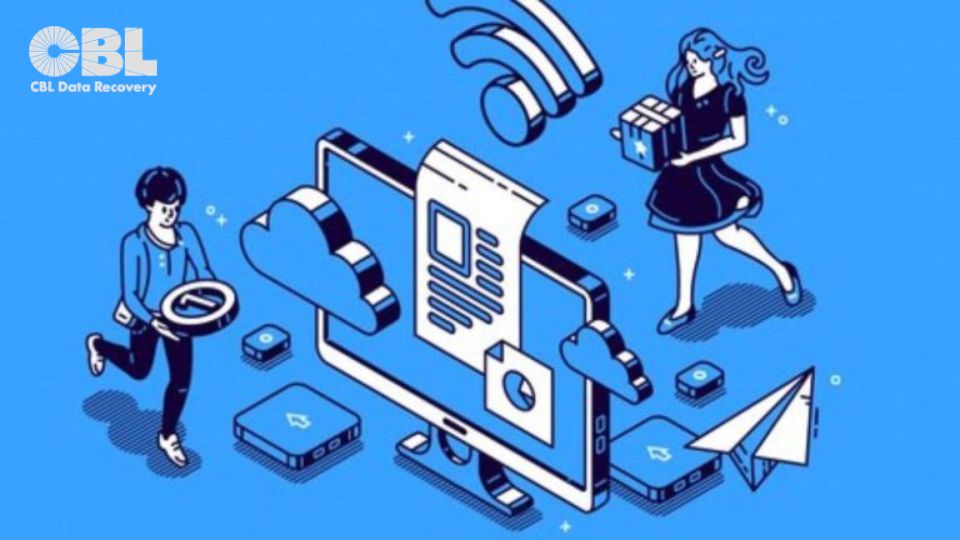USB Flash Drive Recovery
The USB Flash Drive (also known as the thumb drive) is one of the most popular ways to store all kinds of information. Your USB Flash Drive may contain important information. Your family photos, work documents, favorite music, etc.
However, like everything else, they are imperfect. They are readily damaged when dropped, struck with keys, or placed too next to other gadgets. Over time, the data on your USB Flash Drive becomes corrupted. If you’ve ever had a USB Flash Drive fail, you understand how irritating it can be to lose all the data on it.
Fortunately, we might be able to recover your data using our services for recovering data from USB flash drives.
Our professionals will disassemble your USB flash drive and thoroughly examine each component. After that, they’ll try to identify what went wrong and rectify it using cutting-edge equipment.
After finishing, we’ll reassemble everything and test it to make sure there are no issues. We’ll return your USB flash drive to you if everything is in order.
…we won’t charge you anything if we can’t get your data back.
Additionally, we provide a 100 percent no-cost, no-data guarantee because we want to treat you fairly. In other words, we won’t charge you anything if we can’t get your data back.
USB Flash Drive Recovery: What is a Flash Drive?
A flash drive is an external hard disk or solid state storage device used for data backup, file sharing, and transferring files from one computer to another. 
It is also known as a portable media player (PMP), digital versatile disc (DVD) drive, compact disc (CD) burner, or CD/DVD writer. They are commonly used with computers running Microsoft Windows operating system. However, they can be connected to any type of computer.
Why Backing Up Your Data Is Important and 7 Ways How to Do It Properly
USB flash drives aren’t always reliable. Sometimes, these tiny storage devices fail due to physical damage or internal errors. If you lose access to your important information stored on a USB flash drive, then you may want to consider using USB flash drive recovery software.
If you don’t back up your data…
then you could EASILY lose valuable information.
1. Backing Up Data
Backup your USB drive before you take it out of its case. If you don’t back up your data, then you could lose everything if something happens to your computer. You should always have at least two copies of your files saved somewhere else.
One copy should be stored offsite, preferably in a safe place where no fire or flood damage can occur. Another copy should be kept on your computer’s hard drive. Make sure that both backups are backed up regularly. This will make sure your success rate of retrieving loss data would be higher after performing USB flash drive recovery.
2. Formatting Your Drive
If you want to make sure that your backup is secure, you need to format your USB drive. A formatted drive is basically empty space that can only hold data. When you plug in your USB drive, Windows automatically recognizes it and formats it.
However, formatting does not delete any existing data on the drive. To do this, right-click on the USB drive icon in My Computer and select Properties. Click the Tools tab and click the Delete button. Select the option labeled Quick Format (this may require administrator privileges). After you’ve done this, close the window and unplug the drive.
3. Encrypting Your Backup
Encryption is a way of scrambling information so that nobody except you can read it. There are many different types of encryption programs, including TrueCrypt, BitLocker, and FileVault.
All these programs encrypt your entire drive, including the operating system. Once you’re finished using your encrypted drive, you’ll need to decrypt it again. Right-click on the drive icon in My Computer, select Properties, and click the Tools tab. Then, click the Advanced button. In the box that appears, type in your password and press Enter. Now, you can use your drive normally.
4. Using Portable Hard Drives
You can also store your data on portable hard drives. These devices are small enough to fit inside your pocket, purse, backpack, briefcase, or laptop bag. They are much easier to carry around than larger external hard drives. Just remember to keep them plugged in while they are being used. Also, make sure that you have a power supply connected to them.
5. Keeping Your Files Organized
It’s best to organize your files according to their importance. Important documents should be placed in folders marked with labels indicating what each folder contains. Keep your important documents in a separate folder. You can create subfolders within your main folders to further categorize your files.
6. Avoiding Overwriting Existing Documents
When you save a file, you overwrite the previous version of the same document. So, if you open a Word document and start typing, the program will replace whatever was already written on the page. If you accidentally overwrite a file, you can recover it by opening the Recycle Bin. Right-click on your desktop, select View, and then select Empty Recycle Bin. Now, you can access the deleted file.
7. Deleting Unused Folders
As you add more files to your computer, you might find yourself having too many folders. To avoid clutter, you can remove unused folders. Open your Start menu and search for Folder Options. From here, you can choose how many items you’d like to show in the left pane of the window. If you decide that you don’t need to see all those extra folders, you can simply drag them down to the bottom of the list.
8. Back Up Your Data Regularly
To protect your data from loss, you must back up your files regularly. This means copying your files onto an external hard drive or CD/DVD. Make sure that you copy your files before deleting them. The reason for this is because once you delete a file, there is no going back.
When do you need USB Flash Drive Recovery?
Even if you back up your files regularly, sometimes things happen. A fire might destroy your hard drive, or someone could steal your laptop. If something happens to your USB flash drive, then your data is gone forever. That’s why you need to make sure that you have a way to retrieve your data.
Using USB flash drive recovery software gives you several advantages.
- First, it helps you get your data back faster.
- Second, it makes recovering your data easier.
- Third, it provides security.
- Fourth, it keeps your data safe. And finally, it prevents future problems.
Make sure that you keep backups of your data. Also, try not to store sensitive documents on your USB flash drive. Instead, save them online. Finally, never leave your USB flash drive unattended while plugged in.
10 Common reasons for USB Flash drive failure that results in data loss
1. Power Surge
A power surge occurs when there is a sudden increase in voltage (or current) caused by a short circuit in the electrical system. A power surge may cause damage to electronic devices due to overloading of circuits. If you have experienced a power surge, try to avoid using USB drives until they are fully charged again.
2. Virus Infection
Viruses are microscopic organisms that replicate themselves inside computers and mobile phones. When a virus infects a computer, it changes the way programs work. Viruses can spread rapidly if not removed immediately. You should always back up any files before deleting them.
3. Hardware Failure
The USB port on your computer could fail. To check whether this is the case, plug in a different USB device to ensure that it works properly. If it does not, then contact your manufacturer for assistance.
4. Physical Damage
Your USB drive might get damaged physically. Try to keep it away from water and extreme temperatures. If possible, store it in a safe place where it won’t be exposed to these conditions.
5. Software Malfunction
Software malfunctions occur when software stops working correctly. Your operating system might stop responding to commands or applications might crash. In some cases, the only solution is to reformat the hard disk.
6. Accidental Deletions
Accidentally deleting files is quite common. However, it’s best to use caution when doing so. Always make sure that you know what you’re deleting before pressing delete. Also, don’t forget to save your documents first!
7. User Error
If you accidentally delete files, you’ll need to restore them. There are several ways to do this. First, you can recover deleted files using third-party recovery tools. Alternatively, you can use undelete utilities to help you retrieve lost data.
8. System Crash
System crashes happen when an error causes the operating system to shut down unexpectedly. This usually happens because of hardware problems such as overheating. It’s important to fix these issues quickly to prevent further damage.
9. Data Corruption
Data corruption occurs when information stored on a storage medium becomes corrupted. For example, if you copy a file onto a blank CD, then remove the CD without saving the file, the original version will remain intact. However, if you overwrite the same area with new data, the original content will be overwritten.
10. Fire/Water Damage
Fire and water damage are two of the most common reasons why USB drives fail. Water damage can destroy internal components while fire can melt plastic casing. These disasters can render your USB drive useless.
How to perform USB Flash Drive Recovery – for Minor Issues
USB flash drives have become extremely popular among people due to their small size and ease of use. However, they do not always provide the best protection for sensitive information stored on them. If you lose your USB flash drive, you may want to try recovering its contents before disposing of it. Here are some tips on how to recover data from a lost USB flash drive.
Check if the Flash Drive Is Lost
Before you start trying to recover data from a USB flash drive, check if it’s still connected to your computer. The easiest way to do this is by opening up Disk Management. You should see all of the available storage devices listed there. If you cannot find your USB flash drive, it has probably been disconnected.
Try Using Different USB Port
Another thing to consider when trying to recover data from your USB flash drive is whether it was connected to a different port than usual. For example, if you were working on a project at home and forgot to plug your USB flash drive back into your laptop after finishing work, you might want to try connecting it to another port instead. This could be an external hard drive, a printer, or even a smartphone.
Use a Portable External Hard Drive
One of the most common ways to recover data from a missing USB flash drive is to connect it to a portable external hard drive. A portable external hard drive is much larger than a USB flash drive, so it will likely hold more data. It also allows you to access files without having to worry about losing your USB flash drive.
Recover Files Using Your Operating System
Another method of recovering data from a USB flash device is to use your operating system. Most modern operating systems such as Windows 7, 8, and 10 offer built-in tools that can help you recover lost data. These tools include the Recycle Bin, which lets you restore deleted files. In addition, you can use disk imaging software to create backups of your entire hard drive.
Use Other Methods
There are other methods of recovering data from a lost USB drive. Some of these methods require specialized equipment, but others are free. For example, you can use a program called PhotoRec to recover photos and videos from a USB flash drive. This tool is compatible with both Windows and macOS computers.
Engage CBL USB Flash Drive Recovery Experts – For More Complex Issues
After trying several methods, you’ll probably end up choosing the best method for your specific situation. If you need further assistance, consult a professional who specializes in data recovery.
If you’re not sure which method to use or if you have any questions about USB flash drive recovery, contact our support team.
Why you should (Must) Encrypt your storage device after a successful USB Flash Drive Recovery?
After recovering data from your USB flash drive, you may want to use encryption software to protect your data. 
If someone hacks into your computer or smartphone, they will be able to access any files on them.
Encryption protects against hackers who might try to access your files if they find them on a computer or network.
In other words, it also means data means hiding information so no one else can read it. It also makes it harder for hackers to steal your personal information.
Encrypting drives is easy with the built-in Windows 7 disk encryption feature. You can also encrypt individual folders and even entire hard drives.
Why Choose CBL Data Recovery?
CBL Data Recovery is an industry leader when it comes to USB Flash Drive Recovery Services. We specialize in recovering files from damaged USB drives.
Our skilled and knowledgeable team strives to retrieve your critical data securely and quickly. CBL Data Recovery has been the people’s choice for years as we retrieve your important data as soon as possible with a high USB flash drive recovery success rate.
Our data recovery engineers use best-in-class tools with advanced techniques and methodologies. Consequently, we are able to recover data even from severely damaged portable media. Moreover, From USB data recovery to SD card data recovery, we offer a wide range of services that caters to all your data recovery requirements.
The experts, here at CBL Data Recovery have a full range of data recovery services, includes:
- CDs and DVDs
- Jaz Disks
- Flash Drives
- Floppy Disks
- USB Thumb Drives
- Micro SD Cards
- SyQuest Cartridges
- External Hard Drives
- Optical Disks
So, if you need to perform USB flash drive recovery, repaired or backed up…
We Have a No Data, No Charge Policy
We understand that losing data is a pain. We also offer a 100% no charge, no data policy. This means that you only pay if we manage to recover it from you. In other words, you don’t have to pay if there’s no data recovered.
To get in touch with one of our customer representatives for any kind of data loss problem, give us a call.
 0800-171-2225
0800-171-2225 
